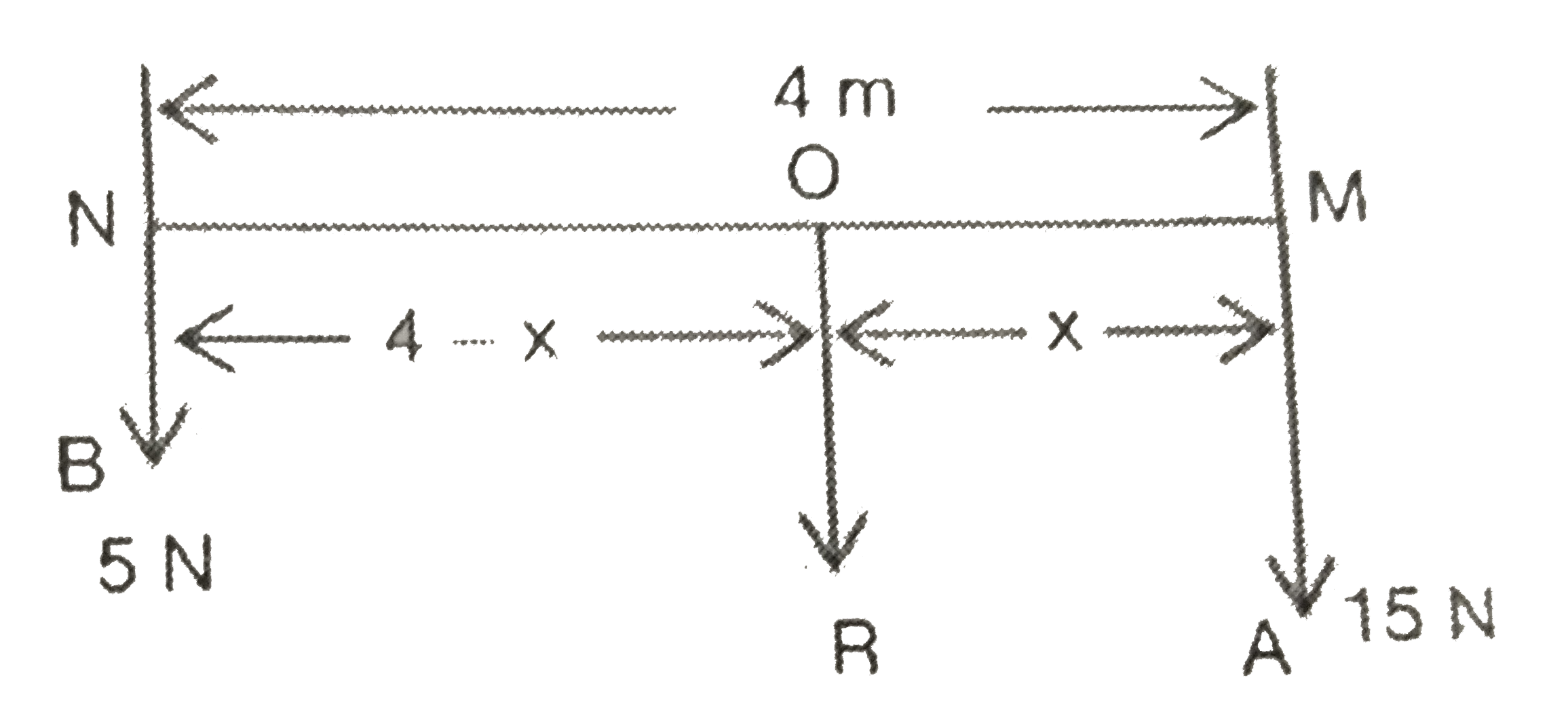Two like forces P and 3P act on a rigid body at points A and B respectively. If the forces are interchanged in position, the position of application of the resultant will be displaced through a distance of
AB/2
AB/3
AB/4
3AB/4
The correct Answer is:A
Similar Questions
A line AB is divided into any two parts at C. The resultant of two like parallel forces P and Q acting through the middle point of AC and CB passes through C. If Pand Q be interchanged in position, their resultant will pass through the middle point of AB.
View SolutionTwo equal and opposite forces act on a rigid body at a certain distance. Then
View Solution
Knowledge Check
Two like parallel forces P and Q act on a rigid body at A and B respectively. If P and Q be interchanged in position, show that the point of application of the resultant be displaced through a distance d along AB, where d =
AP+QP−QABB2P+Q2P−QABCP−QP+QABDP−Q2p+Q=ABTwo like parallel forces 5 Nand 15 N, act on a light rod at two points A and B respectively, 6 m apart. The resultant force and the distance of its point of action from the point A'are
A10N,4.5mB20N,4.5mC20N,1.5mD10N,1.5mTwo equal and opposite forces act on a rigid body at a certain distance. Then
Athe body is in equilibriumBthe body will rotate about its centre of massCthe body may rotate about any point other than its centre of massDthe body cannot rotate about its centre of mass
Two like parallel forces acting on a rod, 15 N and 5 N are separated by a distance of 4 m. What is the magnitude, direction and point of application of the resultant?

View SolutionShow that if each of the two unlike forces P and Q(P>Q) acting at a distanced apart, be increased by S, their resultant will not be altered in magnitude, but its point of application will be moved through a distance Sd/(P−Q).
View SolutionLet two like parallel forces are acting, at points A and B such that the force at A is double than the force at B. If C is the point of action of the resultant, then AC/BC IS
View SolutionLet two like parallel forces are acting, at points A and B such that the force at A is double than the force at B. If C is the point of action of the resultant, then AC/BC IS
View SolutionIf two equal forces act on the body in opposite direction, then the resultant force on the body will be
View Solution
